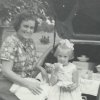Welcome to the Forum, harryk. And thanks very much for pointing us to the wonderful IMI resource which you have pulled together and put online. So useful to those interested in the Company and to family history researchers.
I have a few of these Metals Monitors and have always thought of scanning and uploading them (to supplement the Kynoch/IMI information I have made available – potted Company history, photos of site and individuals from the 1960s, WW2 information etc. I'll check through them at some stage and see if they are additional to those which you have provided. They always used to appear as an insert into the ICI Magazine – a much more nicely produced publication but not as immediately interesting to Kynoch people. When I have dug them out I'll let you know if there are any additions.
Thanks also for your generous offer permitting this information to be shared. I think it would be very beneficial if, somehow or other, the detailed information could appear in this Forum. I think that the Forum is generally acknowledged to be a better repository of serious historical information like this – it avoids many of the Facebook limitations such as googleability, the way information can be presented and the risk of valuable information rapidly getting buried and lost. Added to which a number of members of this Forum are uncomfortable with Fb and wouldn't touch it with a barge pole. So, perhaps this could happen at some stage. A new, dedicated thread could contain it.
(I'll just add a final plea. If Forum members do take up your kind offer about sharing this information from the Fb page, could they always remember, please, to mention and make acknowledgement to its source. I know from personal experience just how much hard work and effort goes into the sort of exercise which you have completed, in order to make useful information accessible to all. It is very irritating (and I COULD use stronger language, but this is a family group) to see one's own original information being used elsewhere without the slightest acknowledgement, even when it is protected by copyright. It's annoying, not only because one gets no credit – we should I suppose all be mature enough to put up with that and not resent all the WOWs!! and OMGs!!!!. But also because the poster hasn't even thought that someone might be sufficiently interested to find out more about the subject and would appreciate a pointer towards everything else which is available: much more detail, more and higher quality images, serious comment and so on......Rant over!)
Thanks again, harryk.
Chris







